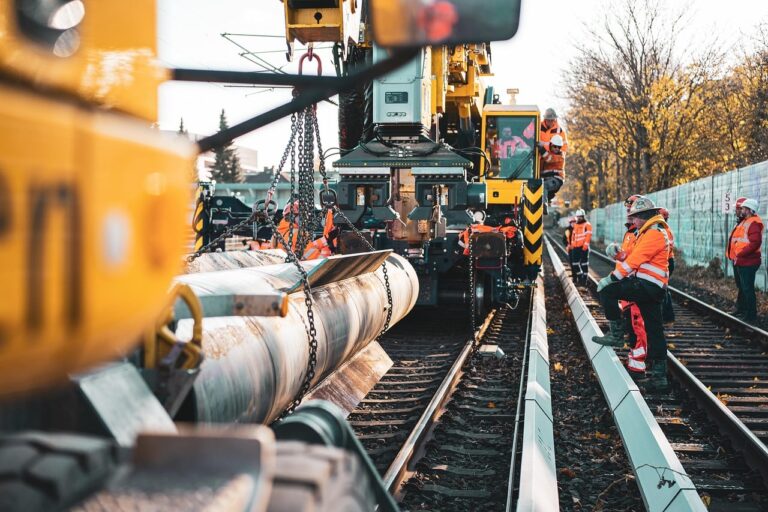Mastering noise control in utilities and water infrastructure
Expert tips for residential estate developers In residential estate development, ensuring that construction activities can successfully coexist beside communities hinges on effective noise control strategies. And while attention often centres on construction-related noise, installing and maintaining utilities such as water, power, and communications infrastructure also pose potential disruptions. In this news post, the Flexshield team…
Expert tips for residential estate developers
In residential estate development, ensuring that construction activities can successfully coexist beside communities hinges on effective noise control strategies. And while attention often centres on construction-related noise, installing and maintaining utilities such as water, power, and communications infrastructure also pose potential disruptions.
In this news post, the Flexshield team explore how developers can navigate noise control challenges while ensuring the seamless integration of essential utilities into residential estates.
Why water infrastructure is integral to Australian communities
Before examining noise mitigation strategies, it’s essential to understand the dynamics of residential estate development, and the integral role utilities play in shaping the community’s fabric.
From ensuring a reliable water supply, to facilitating seamless communication and powering homes, utilities form the backbone of modern living environments.
Noise control in water infrastructure
To minimise the impact of noise from water infrastructure, developers can utilise proven strategies across the three main phases of the water infrastructure development process:
1) Construction phase
Noise control measures are essential to minimise disruptions during the installation of water infrastructure. Vital steps include employing quieter construction equipment, scheduling noisy activities during non-peak hours, and notifying nearby residents in advance.
2) Pump stations and treatment plants
Designing pump stations and treatment plants with noise-reducing features – such as sound barriers and acoustic enclosures – helps to mitigate operational noise. Additionally, strategic placement and landscaping can be natural buffers against sound transmission.
3) Water distribution network
Optimising the layout of water pipes and valves, together with regular maintenance to prevent leaks and malfunctions, contributes to quieter operations.
Noise management in power utilities
Just as with water infrastructure, the construction, operation, and maintenance of power utilities can cause excess noise which must be planned for and abated.
1) Construction and maintenance
The construction and maintenance of power utilities demand careful planning to mitigate noise. Effective measures include using quieter machinery, adhering to construction schedules, and implementing noise barriers.
2) Substations and transformers
Incorporating sound-absorbing materials in the design of substations and transformers helps dampen operational noise. Additionally, strategic landscaping and green buffers contribute to noise reduction.
3) Overhead lines and underground cables
Since overhead power lines may generate an audible hum, underground cables offer a quieter alternative. However, both methods require proper insulation and maintenance to minimise noise emissions.
Communication infrastructure and noise control
The third critical element of residential development construction, communication infrastructure also calls for careful planning and implementation of noise control:
1) Telecommunication towers
The installation and maintenance of telecommunication towers can generate noise, particularly during construction and equipment servicing. Implementing noise barriers, scheduling activities thoughtfully, and adhering to regulatory standards are essential.
2) Fibre optic networks
Deploying fibre optic networks for high-speed internet and communication services is integral to modern residential estates. However, trenching and installation activities necessitate noise control measures, including equipment selection and scheduling.
3) Data centres and equipment rooms
Noise generated by data centres and equipment rooms can pose challenges in residential environments. Effective strategies include employing soundproofing materials, designing ventilation systems for quiet operation, and situating facilities away from residential areas.
Infrastructure noise control case studies
Flexshield has undertaken initiatives to enhance utilities and infrastructure projects to minimise their impact on the local community. Notable projects in this regard include Springfield Rise, Paddy Gully, and Callistemon Court.
Get expert advice on noise control for utilities and water infrastructure
In the intricate process of developing residential estates, utilities play a vital role in enhancing quality of life for residents. Yet it’s important to install and maintain such utilities while being mindful of noise control.
Developers can address noise challenges by taking proactive measures, such as using quieter equipment, installing sound barriers, and maintaining open communication with stakeholders. By carefully planning and executing these measures, it’s possible to create residential estates free from excessive noise.
For engineered noise control solutions for water infrastructure, contact Flexshield on 1300 799 969.
Related Stories
-

Flexshield’s big month in industrial noise control – on the road from QLD to WA!
Taking action for hearing health and sustainable water management It’s been a busy month for the Flexshield team, and we’ve covered vast distances from Queensland to New South Wales, Victoria, and Western Australia. It’s been… -

The science behind tailored industrial noise control solutions for your project
7 key considerations for addressing noise pollution for your project When you’re managing noise on a job site, it’s important to understand the science behind industrial noise control and how to apply it effectively. Whether… -

World Hearing Day 2025: protecting workers’ hearing with Flexshield
Why prioritising hearing protection is essential for your workforce Each year on March 3rd, the World Health Organisation (WHO) marks World Hearing Day, raising awareness about hearing loss and promoting actions to protect auditory health….